- Description
- Additional Information
- Brand
- How To Use
- Product Details
- Side Effects
- Ingredients
- How to Store
- Patient Information leaflet
- Reviews (0)
- Questions & Answers (1)
Nexium 40mg Tablets – Esomeprazole 40mg, 28 Tablets
Nexium 40mg Tablets provide effective relief from the pain and discomfort of frequent heartburn. Utilizing the active ingredient esomeprazole 40mg, these tablets belong to a class of medicines known as proton pump inhibitors that reduce the amount of acid your stomach produces. Nexium 40mg Tablets are suitable for those aged 18 years and above who frequently experience heartburn symptoms following meals or in the evenings, providing them with long-lasting relief when taken correctly. This product comes with a Patient Information Leaflet which should be read prior to taking medication. Trust in Nexium 20mg Tablets to keep you comfortable and symptom free.
Nexium is used to treat the following conditions:
Adults
- ‘Gastroesophageal reflux disease’ (GERD). This is where acid from the stomach escapes into the gullet (the tube which connects your throat to your stomach) causing pain, inflammation and heartburn.
- Ulcers in the stomach or upper part of the gut (intestine) that are infected with bacteria called ‘Helicobacter pylori’. If you have this condition, your doctor may also prescribe antibiotics to treat the infection and allow the ulcer to heal.
- Stomach ulcers caused by medicines called NSAIDs (Non-Steroidal Anti-Inflammatory Drugs). Nexium can also be used to stop stomach ulcers from forming if you are taking NSAIDs.
- Too much acid in the stomach caused by a growth in the pancreas (Zollinger-Ellison syndrome).
- Prolonged treatment after prevention of rebleeding of ulcers with intravenous Nexium.
Adolescents aged 12 years and above
- ‘Gastroesophageal reflux disease’ (GERD). This is where acid from the stomach escapes into the gullet (the tube which connects your throat to your stomach) causing pain, inflammation and heartburn.
- Ulcers in the stomach or upper part of the gut (intestine) that are infected with bacteria called ‘Helicobacter pylori’. If you have this condition, your doctor may also prescribe antibiotics to treat the infection and allow the ulcer to heal.
Nexium can be used to treat dogs and horses when prescribed by a vet
Can someone who is pregnant or breastfeeding use Nexium 40mg Tablets?
If you are pregnant, think you may be pregnant or are planning to have a baby, ask your doctor or pharmacist for advice before taking this medicine. Your doctor will decide whether you can take Nexium during this time. It is not known if Nexium passes into breast milk. Therefore, you should not take Nexium if you are breastfeeding.
Nexium 40mg Tablets Reviews
After using Nexium 40mg Tablets, it’s helpful to let others know about your experience. Reviews of an item help other users know that medicines received have helped the condition it is claimed for, how well the treatment worked or any issues to be aware of. We invite our users to leave a review of both their treatment and of the service provided. Click on the reviews tab to see if there has been feedback on this item.
What is the price of Nexium 40mg Tablets?
The price of Nexium 40mg Tablets is £35.25
Where can you buy Nexium 40mg Tablets?
You can buy Nexium 40mg Tablets at Dock Pharmacy Essex UK, UK Online Pharmacy.
Can you buy Nexium 40mg Tablets Over the counter?
Nexium 40mg Tablets is not available to buy over the counter. You need a prescription to buy Nexium 40mg Tablets
| Brand | |
|---|---|
Brand
Nexium
How To Use
How to take Nexium
Always take this medicine exactly as your doctor or pharmacist has told you. Check with your doctor or pharmacist if you are not sure.
- If you are taking this medicine for a long time, your doctor will want to monitor you (particularly if you are taking it for more than a year).
- If your doctor has told you to take this medicine as and when you need it, tell your doctor if your symptoms change.
How much to take
- Your doctor will tell you how many tablets to take and how long to take them for. This will depend on your condition, how old you are and how well your liver works.
- The recommended doses are given below.
Use in adults aged 18 and above
To treat heartburn caused by gastroesophageal reflux disease (GERD):
- If your doctor has found that your food pipe (gullet) has been slightly damaged, the recommended dose is one Nexium 40 mg gastro-resistant tablet once a day for 4 weeks. Your doctor may tell you to take the same dose for a further 4 weeks if your gullet has not yet healed.
- The recommended dose once the gullet has healed is one Nexium 20 mg gastro-resistant tablet once a day
- If your gullet has not been damaged, the recommended dose is one Nexium 20 mg gastro-resistant tablet each day. Once the condition has been controlled, your doctor may tell you to take your medicine as and when you need it, up to a maximum of one Nexium 20 mg gastro-resistant tablet each day.
- If you have severe liver problems, your doctor may give you a lower dose.
To treat ulcers caused by Helicobacter pylori infection and to stop them coming back:
- The recommended dose is one Nexium 20 mg gastro-resistant tablet twice a day for one week.
- Your doctor will also tell you to take antibiotics for example amoxicillin and clarithromycin.
To treat stomach ulcers caused by NSAIDs (Non-Steroidal Anti-Inflammatory Drugs):
- The recommended dose is one Nexium 20 mg gastro-resistant tablet once a day for 4 to 8 weeks.
To prevent stomach ulcers if you are taking NSAIDs (Non-Steroidal Anti-Inflammatory Drugs):
- The recommended dose is one Nexium 20 mg gastro-resistant tablet once a day.
To treat too much acid in the stomach caused by a growth in the pancreas (Zollinger-Ellison syndrome):
- The recommended dose is Nexium 40 mg twice a day.
- Your doctor will adjust the dose depending on your needs and will also decide how long you need to take the medicine for. The maximum dose is 80 mg twice a day.
Prolonged treatment after prevention of rebleeding of ulcers with intravenous Nexium:
- The recommended dose is one Nexium 40 mg tablet once a day for 4 weeks.
Use in adolescents aged 12 or above
To treat heartburn caused by gastroesophageal reflux disease (GERD):
- If your doctor has found that your food pipe (gullet) has been slightly damaged, the recommended dose is one Nexium 40 mg gastro-resistant tablet once a day for 4 weeks. Your doctor may tell you to take the same dose for a further 4 weeks if your gullet has not yet healed.
- The recommended dose once the gullet has healed is one Nexium 20 mg gastro-resistant tablet once a day.
- If your gullet has not been damaged, the recommended dose is one Nexium 20 mg gastro-resistant tablet each day.
- If you have severe liver problems, your doctor may give you a lower dose.
To treat ulcers caused by Helicobacter pylori infection and to stop them coming back:
- The recommended dose is one Nexium 20 mg gastro-resistant tablet twice a day for one week.
- Your doctor will also tell you to take antibiotics for example amoxicillin and clarithromycin.
Taking this medicine
- You can take your tablets at any time of the day.
- You can take your tablets with food or on an empty stomach.
- Swallow your tablets whole with a drink of water. Do not chew or crush the tablets. This is because the tablets contain coated pellets which stop the medicine from being broken down by the acid in your stomach. It is important not to damage the pellets.
What to do if you have trouble swallowing the tablets
- If you have trouble swallowing the tablets:
- Put them into a glass of still (non-fizzy) water. Do not use any other liquids.
- Stir until the tablets break up (the mixture will not be clear). Then drink the mixture straight away or within 30 minutes. Always stir the mixture just before drinking it.
- To make sure that you have drunk all of the medicine, rinse the glass very well with half a glass of water and drink it. The solid pieces contain the medicine – do not chew or crush them.
- If you cannot swallow at all, the tablet can be mixed with some water and put into a syringe. It can then be given to you through a tube directly into your stomach (‘gastric tube’).
Use in children under the age of 12 years
Nexium gastro-resistant tablets are not recommended for children less than 12 years old.
Information on dosing for children aged 1 to 11 years is provided in Nexium sachet product information (ask your doctor or pharmacist if you require further information).
Elderly
Dose adjustment is not required in the elderly.
If you take more Nexium than you should
If you take more Nexium than prescribed by your doctor, talk to your doctor or pharmacist straight away.
If you forget to take Nexium
- If you forget to take a dose, take it as soon as you remember it. However, if it is almost time for your next dose, skip the missed dose.
- Do not take a double dose (two doses at the same time) to make up for a forgotten dose.
If you have any further questions on the use of this medicine, ask your doctor or pharmacist.
Product Details
What you need to know before you take Nexium
Do not take Nexium:
- If you are allergic to esomeprazole or any of the other ingredients of this medicine (listed in section 6).
- If you are allergic to other proton pump inhibitor medicines (e.g. pantoprazole, lansoprazole, rabeprazole, omeprazole).
- If you are taking a medicine containing nelfinavir (used to treat HIV infection).
Do not take Nexium if any of the above apply to you. If you are not sure, talk to your doctor or pharmacist before taking Nexium.
Warnings and precautions
Talk to your doctor or pharmacist before taking Nexium:
- If you have severe liver problems.
- If you have severe kidney problems.
- If you have ever had a skin reaction after treatment with a medicine similar to Nexium that reduces stomach acid.
- If you are due to have a specific blood test (Chromogranin A).
Nexium may hide the symptoms of other diseases. Therefore, if any of the following happen to you before you start taking Nexium or while you are taking it, talk to your doctor straight away:
- You lose a lot of weight for no reason and have problems swallowing.
- You get stomach pain or indigestion.
- You begin to vomit food or blood.
- You pass black stools (blood-stained faeces).
If you have been prescribed Nexium “on demand” you should contact your doctor if your symptoms continue or change in character.
Taking a proton pump inhibitor like Nexium, especially over a period of more than one year, may slightly increase your risk of fracture in the hip, wrist or spine. Tell your doctor if you have osteoporosis or if you are taking corticosteroids (which can increase the risk of osteoporosis).
Rash and skin symptoms
If you get a rash on your skin, especially in areas exposed to the sun tell your doctor as soon as you can, as you may need to stop your treatment with Nexium. Remember to also mention any other ill-effects like pain in your joints.
Serious skin rashes have occurred in patients taking esomeprazole (see also section 4). The rash can involve ulcers of the mouth, throat, nose, genitals and conjunctivitis (red and swollen eyes). These serious skin rashes often come after flu-like symptoms such as fever, headache, body ache. The rash may cover large parts of the body with blistering and peeling of the skin.
If at any time during the treatment (even after several weeks) you develop a rash or any of these skin symptoms, stop taking this medicine and contact your doctor immediately.
Children under the age of 12 years
Information on dosing for children aged 1 to 11 years is provided in Nexium sachet product information (ask your doctor or pharmacist if you require further information).
Other medicines and Nexium
Tell your doctor or pharmacist if you are taking, have recently taken or might take any other medicines. This includes medicines that you buy without a prescription. This is because Nexium can affect the way some medicines work and some medicines can have an effect on Nexium.
Do not take Nexium Tablets if you are taking a medicine containing nelfinavir (used to treat HIV infection).
Tell your doctor or pharmacist if you are taking any of the following medicines:
- Atazanavir (used to treat HIV infection).
- Clopidogrel (used to prevent blood clots).
- Ketoconazole, itraconazole or voriconazole (used to treat infections caused by a fungus).
- Erlotinib (used to treat cancer).
- Citalopram, imipramine or clomipramine (used to treat depression).
- Diazepam (used to treat anxiety, relax muscles or in epilepsy).
- Phenytoin (used in epilepsy). If you are taking phenytoin, your doctor will need to monitor you when you start or stop taking Nexium.
- Medicines that are used to thin your blood, such as warfarin. Your doctor may need to monitor you when you start or stop taking Nexium.
- Cilostazol (used to treat intermittent claudication – a pain in your legs when you walk which is caused by an insufficient blood supply).
- Cisapride (used for indigestion and heartburn).
- Digoxin (used for heart problems).
- Methotrexate (a chemotherapy medicine used in high doses to treat cancer) – if you are taking a high dose of methotrexate, your doctor may temporarily stop your Nexium treatment.
- Tacrolimus (organ transplantation).
- Rifampicin (used for treatment of tuberculosis).
- St. John’s wort (Hypericum perforatum) (used to treat depression).
If your doctor has prescribed the antibiotics amoxicillin and clarithromycin as well as Nexium to treat ulcers caused by Helicobacter pylori infection, it is very important that you tell your doctor about any other medicines you are taking.
Nexium with food and drink
You can take your tablets with food or on an empty stomach.
Pregnancy, breast-feeding and fertility
If you are pregnant, think you may be pregnant or are planning to have a baby, ask your doctor or pharmacist for advice before taking this medicine. Your doctor will decide whether you can take Nexium during this time. It is not known if Nexium passes into breast milk. Therefore, you should not take Nexium if you are breastfeeding.
Driving and using machines
Nexium is not likely to affect you being able to drive or use any tools or machines. However, side effects such as dizziness and blurred vision may uncommonly or rarely occur (see section 4). If affected, you should not drive or use machines.
Nexium contains sucrose
Nexium contains sugar spheres which contain sucrose, a type of sugar. If you have been told by your doctor that you have an intolerance to some sugars, talk to your doctor before taking this medicine.
Sodium content
Nexium contains less than 1 mmol sodium (23 mg) per tablet, that is to say essentially ‘sodium-free’.
Side Effects
Possible side effects
Like all medicines, this medicine can cause side effects, although not everybody gets them.
If you notice any of the following serious side effects, stop taking Nexium and contact a doctor immediately:
- Yellow skin, dark urine and tiredness which can be symptoms of liver problems. These effects are rare, and may affect up to 1 in 1,000 people.
- Sudden wheezing, swelling of your lips, tongue and throat or body, rash, fainting or difficulties in swallowing (severe allergic reaction).
These effects are rare, and may affect up to 1 in 1,000 people. - Sudden onset of a severe rash or reddening of the skin with blisters or peeling may occur even after several weeks of treatment. There may also be severe blisters and bleeding in the lips, eyes, mouth, nose and genitals. The skin rashes may develop into serious widespread skin damage (peeling of the epidermis and superficial mucous membranes) with life threatening consequences. This could be ‘erythema multiforme’, ‘Stevens-Johnson syndrome’, ‘toxic epidermal necrolysis’ or ‘drug reaction with eosinophilia and systemic symptoms’. These effects are very rare, and might affect up to 1 in 10,000 people.
Other side effects include:
Common (may affect up to 1 in 10 people)
- Headache.
- Effects on your stomach or gut: diarrhoea, stomach pain, constipation, wind (flatulence).
- Feeling sick (nausea) or being sick (vomiting).
- Benign polyps in the stomach.
Uncommon (may affect up to 1 in 100 people)
- Swelling of the feet and ankles.
- Disturbed sleep (insomnia).
- Dizziness, tingling feelings such as “pins and needles”, feeling sleepy.
- Spinning feeling (vertigo).
- Dry mouth.
- Changes in blood tests that check how the liver is working.
- Skin rash, lumpy rash (hives) and itchy skin.
- Fracture of the hip, wrist or spine (if Nexium is used in high doses and over long duration).
Rare (may affect up to 1 in 1,000 people)
- Blood problems such as a reduced number of white cells or platelets. This can cause weakness, bruising or make infections more likely.
- Low levels of sodium in the blood. This may cause weakness, being sick (vomiting) and cramps.
- Feeling agitated, confused or depressed.
- Taste changes.
- Eyesight problems such as blurred vision.
- Suddenly feeling wheezy or short of breath (bronchospasm).
- An inflammation of the inside of the mouth.
- An infection called “thrush” which can affect the gut and is caused by a fungus.
- Liver problems, including jaundice which can cause yellow skin, dark urine, and tiredness.
- Hair loss (alopecia).
- Skin rash on exposure to sunshine.
- Joint pains (arthralgia) or muscle pains (myalgia).
- Generally feeling unwell and lacking energy.
- Increased sweating.
Very rare (may affect up to 1 in 10,000 people)
- Changes in blood count including agranulocytosis (lack of white blood cells)
- Aggression.
- Seeing, feeling or hearing things that are not there (hallucinations).
- Severe liver problems leading to liver failure and inflammation of the brain.
- Sudden onset of a severe rash or blistering or peeling skin. This may be associated with a high fever and joint pains (Erythema multiforme, Stevens-Johnson syndrome, toxic epidermal necrolysis, drug reaction with eosinophilia and systemic symptoms).
- Muscle weakness.
- Severe kidney problems.
- Enlarged breasts in men.
Not known (frequency cannot be estimated from the available data)
- If you are on Nexium for more than three months it is possible that the levels of magnesium in your blood may fall. Low levels of magnesium can be seen as fatigue, involuntary muscle contractions, disorientation, convulsions, dizziness or increased heart rate. If you get any of these symptoms, please tell your doctor promptly. Low levels of magnesium can also lead to a reduction in potassium or calcium levels in the blood. Your doctor may decide to perform regular blood tests to monitor your levels of magnesium.
- Inflammation in the gut (leading to diarrhoea).
- Rash, possibly with pain in the joints.
Nexium may in very rare cases affect the white blood cells leading to immune deficiency. If you have an infection with symptoms such as fever with a severely reduced general condition or fever with symptoms of a local infection such as pain in the neck, throat or mouth or difficulties in urinating, you must consult your doctor as soon as possible so that a lack of white blood cells (agranulocytosis) can be ruled out by a blood test. It is important for you to give information about your medication at this time.
Reporting of side effects
If you get any side effects, talk to your doctor, pharmacist or nurse. This includes any possible side effects not listed in this leaflet. You can also report side effects directly via the Yellow Card Scheme at www.mhra.gov.uk/yellowcard or search for MHRA Yellow Card in the Google Play or Apple App Store. By reporting side effects you can help provide more information on the safety of this medicine.
Ingredients
What Nexium contains
- The active substance is esomeprazole. Nexium gastro-resistant tablets come in two strengths containing 20 mg or 40 mg of esomeprazole (as magnesium trihydrate).
- The other ingredients are glycerol monostearate 40-55, hyprolose, hypromellose, iron oxide (20 mg reddish-brown, yellow, 40 mg reddish brown) (E172), magnesium stearate, methacrylic acid ethyl acrylate copolymer (1:1) dispersion 30 per cent, microcrystalline cellulose, synthetic paraffin, macrogol, polysorbate 80, crospovidone, sodium stearyl fumarate, sugar spheres (sucrose and maize starch), talc, titanium dioxide (E171), triethyl citrate.
How to Store
How to store Nexium
- Keep this medicine out of the sight and reach of children.
- Do not store above 30°C.
- Do not use this medicine after the expiry date which is stated on the carton and bottle after EXP. The expiry date refers to the last day of that month.
- Store this medicine in the original package (blister) or keep the bottle tightly closed in order to protect from moisture.
- Do not throw away any medicines via wastewater or household waste. Ask your pharmacist how to throw away medicines you no longer use. These measures will help to protect the environment.
Patient Information leaflet
Click here for the Patient Information leaflet
Please read before using the product
Only logged in customers who have purchased this product may leave a review.
There are no answers to this question, be the first to respond.
You Might Also Like
Original price was: £28.50.£26.21Current price is: £26.21.
Original price was: £28.50.£26.21Current price is: £26.21.
- Availability: in stock
Original price was: £68.49.£64.20Current price is: £64.20.
NEXIUM IV VIAL 40MG
Learn MoreOriginal price was: £68.49.£64.20Current price is: £64.20.
- Availability: in stock
Original price was: £44.50.£41.60Current price is: £41.60.
NEXIUM GRANULES SACHET 10MG
Learn MoreOriginal price was: £44.50.£41.60Current price is: £41.60.
- Availability: in stock
Nexium Control provides 24-hour protection from heartburn and acid reflux
Nexium Control is clinically proven shown to relieve night-time heartburn for a good night’s sleep
Nexium Control will help restore your life to how it should be – heartburn free
Nexium Control reduces stomach acid at the source to provide relief all day and night for long-term control
Nexium Control ingredient Esomeprazole
Nexium Control now available in 3 pack sizes: 7, 14 and 28 tablets
Learn More
£6.99 – £18.90
- Availability: in stock
Original price was: £13.48.£11.23Current price is: £11.23.
- Take control of your heartburn with Nexium Control and you can enjoy up to 24-hour protection.
- Nexium Control Capsules can provide up to 24-hour protection from heartburn offering an alternative option to short-term relief such as antacids and alginates.
- Nexium Control reduces stomach acid at the source to help provide relief, all day and all night. Just one pill a day can continuously prevent heartburn from recurring for up to 24 hours helping to keep you heartburn-free.
- For short-term treatment of reflux symptoms (heartburn, acid regurgitation) in adults, aged 18 or over.
- Nexium Control® 20 mg gastro-resistant hard capsules for the short-term treatment of reflux symptoms (e.g. heartburn and acid regurgitation) in adults.
Original price was: £13.48.£11.23Current price is: £11.23.
- Availability: in stock
Other Products From This Seller
Original price was: £9.95.£4.95Current price is: £4.95.
Aqua Man DC Pour Homme Eau De Parfum 100ml Bold and Fresh Aquatic Fragrance for Men Unleash your inner hero with Aqua Man DC Pour Homme Eau De Parfum, 100ml, a fresh and aquatic fragrance for men that embodies strength, confidence, and charisma. Inspired by the iconic DC superhero Aqua Man, this invigorating scent is […]
Learn MoreOriginal price was: £9.95.£4.95Current price is: £4.95.
- Availability: in stock
Original price was: £31.00.£10.95Current price is: £10.95.
Chopard Wish Eau de Parfum 30ml Sweet and Oriental Fragrance for Women Indulge in elegance with Chopard Wish Eau de Parfum, 30ml, a sweet and oriental fragrance for women that exudes sophistication and charm. This luxurious scent by Chopard is inspired by the allure of wishes and dreams, blending warm and sensual notes for a […]
Learn MoreOriginal price was: £31.00.£10.95Current price is: £10.95.
- Availability: in stock
Original price was: £84.00.£26.95Current price is: £26.95.
Vera Wang Lovestruck Eau de Parfum 100ml Romantic Floral and Feminine Fragrance Celebrate romance and femininity with Vera Wang Lovestruck Eau de Parfum, 100ml, a romantic floral fragrance for women inspired by love at first sight. This enchanting scent captures the essence of passion and charm with a blend of delicate florals and sweet fruity […]
Learn MoreOriginal price was: £84.00.£26.95Current price is: £26.95.
- Availability: in stock
Original price was: £25.00.£9.95Current price is: £9.95.
Gloria Vanderbilt Vanderbilt EDT Spray, 100ml Timeless Floral Elegance Embrace timeless elegance with Gloria Vanderbilt Vanderbilt Eau De Toilette Spray, 100ml, a sophisticated floral fragrance for women that captures grace, femininity, and charm. Designed for confident and classic women, this iconic scent by Gloria Vanderbilt combines delicate floral notes with warm undertones for a long-lasting […]
Learn MoreOriginal price was: £25.00.£9.95Current price is: £9.95.
- Availability: in stock
Original price was: £34.00.£15.95Current price is: £15.95.
Elizabeth Arden Splendor Eau De Parfum, 125 ml Sophisticated Floral Fragrance Indulge in timeless elegance with Elizabeth Arden Splendor Eau De Parfum, 125ml, a sophisticated floral fragrance for women that exudes grace and charm. Inspired by moments of pure splendor, this iconic scent by Elizabeth Arden combines floral and woody notes for a captivating and […]
Learn MoreOriginal price was: £34.00.£15.95Current price is: £15.95.
- Availability: in stock
Original price was: £44.00.£19.95Current price is: £19.95.
Elizabeth Arden Red Door Eau De Toilette Spray 50ml Timeless Floral Elegance Step into timeless elegance with Elizabeth Arden Red Door Eau De Toilette Spray, 50ml, a classic floral fragrance for women that has become an icon of sophistication. Inspired by the legendary Red Door Spa, this luxurious scent captures the essence of femininity with […]
Learn MoreOriginal price was: £44.00.£19.95Current price is: £19.95.
- Availability: in stock
Original price was: £55.00.£19.95Current price is: £19.95.
Estee Lauder Pleasures EDP 30ml Fresh and Floral Fragrance for Women Experience the timeless elegance of Estee Lauder Pleasures Eau de Parfum, 30ml, a fresh and floral fragrance for women that captures the beauty of life’s simplest pleasures. This classic scent by Estee Lauder is designed for modern, sophisticated women who appreciate light, airy fragrances. […]
Learn MoreOriginal price was: £55.00.£19.95Current price is: £19.95.
- Availability: in stock
Original price was: £34.99.£19.95Current price is: £19.95.
Sarah Jessica Parker Lovely You Eau de Parfum Spray 100ml Sophisticated Floral and Musky Fragrance Step into timeless elegance with Sarah Jessica Parker Lovely You Eau de Parfum Spray, 100ml, a floral and musky fragrance for women that embodies sophistication and modernity. Created by Sarah Jessica Parker, this iconic scent celebrates femininity with a delicate […]
Learn MoreOriginal price was: £34.99.£19.95Current price is: £19.95.
- Availability: in stock
Original price was: £47.00.£29.95Current price is: £29.95.
Kenzo Flower Eau De Toilette Spray 30ml Fresh and Floral Fragrance for Women Experience the delicate beauty of nature with Kenzo Flower Eau De Toilette Spray, 30ml, a fresh and floral fragrance for women inspired by the elegance of the red poppy. This iconic scent combines floral and powdery notes to create a delicate and […]
Learn MoreOriginal price was: £47.00.£29.95Current price is: £29.95.
- Availability: in stock
Original price was: £47.00.£29.95Current price is: £29.95.
Jimmy Choo Eau de Parfum 40ml Sweet and Floral Fragrance for Women Step into a world of luxury and confidence with Jimmy Choo Eau de Parfum, 40ml, a sweet and floral fragrance for women that embodies modern glamour. Designed for women who exude confidence and style, this Jimmy Choo perfume for women blends fruity and […]
Learn MoreOriginal price was: £47.00.£29.95Current price is: £29.95.
- Availability: in stock


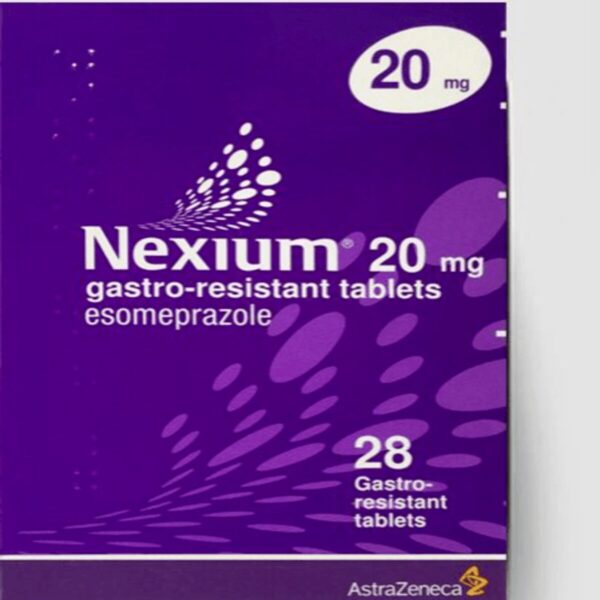
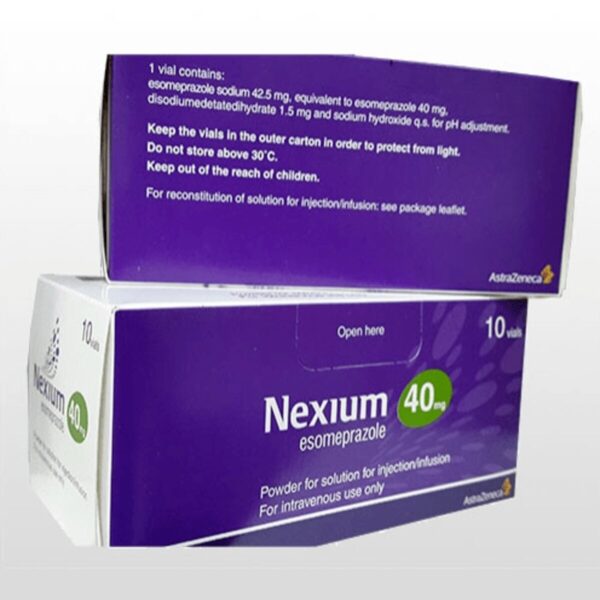
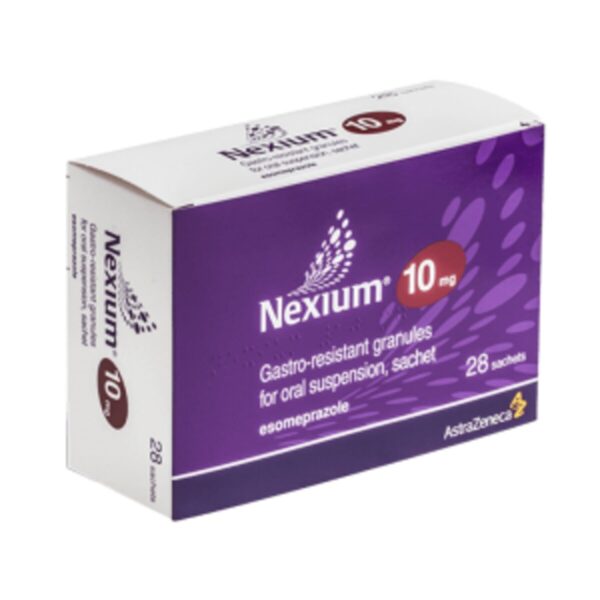
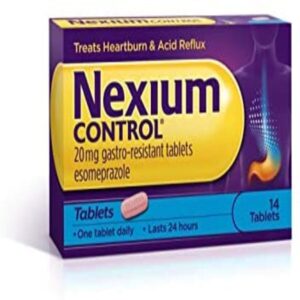
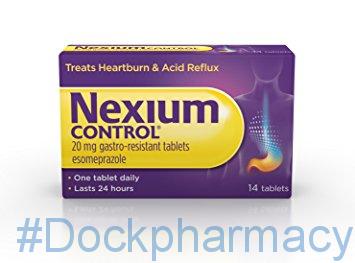
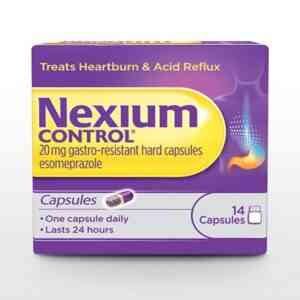
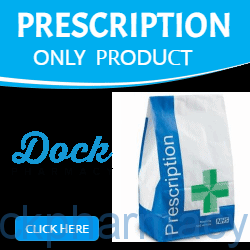
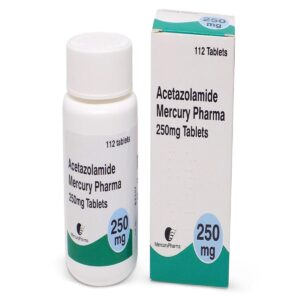










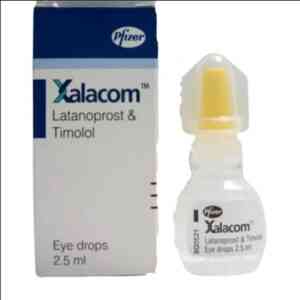
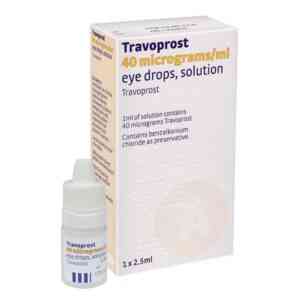
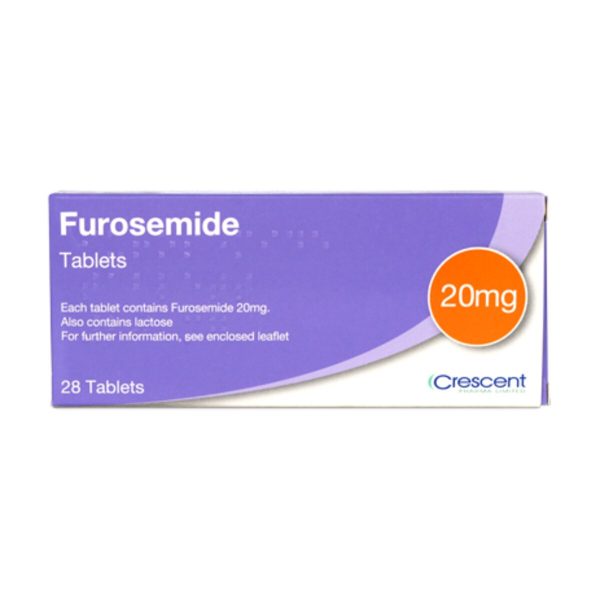

Reviews
There are no reviews yet